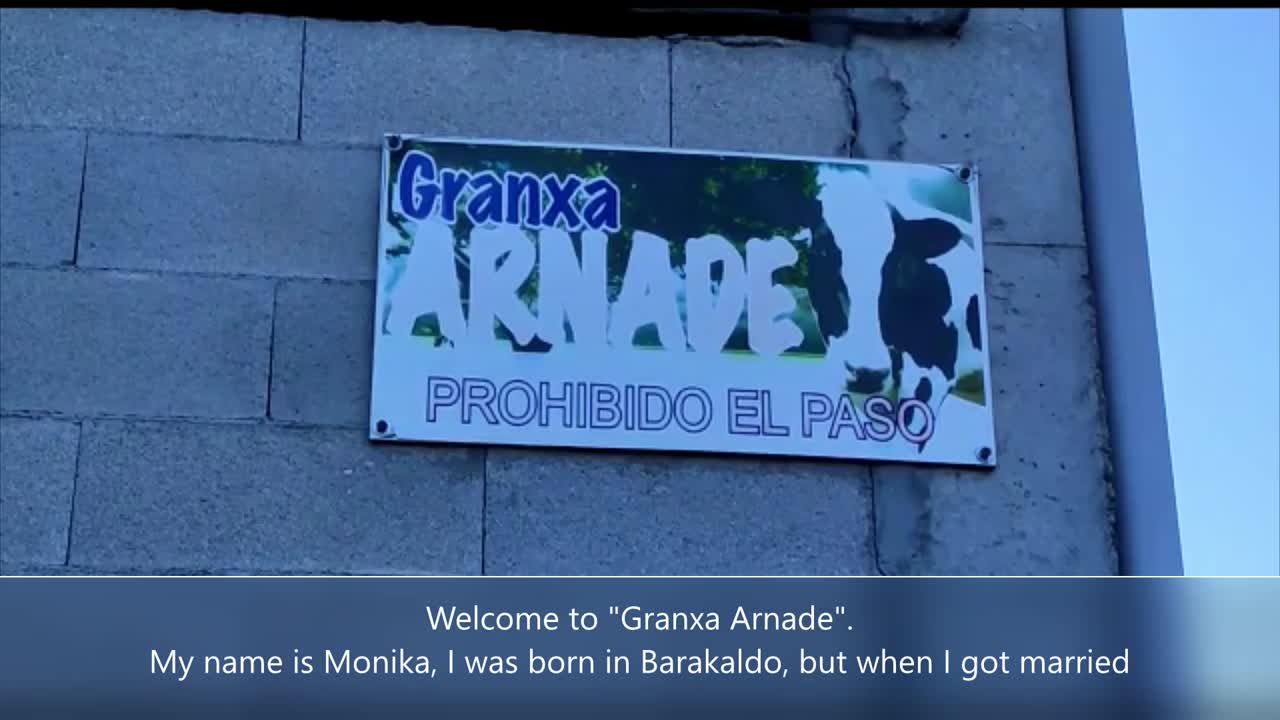Bienvenidos a Granxa Arnade.
Me llamo Monika, nací de Barakaldo, pero cuando me casé vine a formar parte de esta aldea de Monterroso en la provincia de Lugo. Cuatro años después me incorporé a la explotación familiar y poco a poco pasé de tener 14 vacas de leche en extensivo a las 60 cabezas en intensivo que hoy forman “Granxa Arnade”.
Mi trabajo es una rutina diaria, en el que debo estar activa casi 24 horas al día y 365 días al año sin apenas descanso, ni vacaciones en los que poder desconectar, pero por otro lado me siento privilegiada rodeada de naturaleza, aire puro y sobre todo los animales, que me encantan.
La parte más importante es realizar un buen ordeño por la mañana y por la tarde. En primer lugar, está el predipping que es la limpieza, desinfección y secado de la ubre. Después, elimino los primeros chorros para estimular la bajada de la leche y al mismo tiempo descartar posibles mamitis. Coloco la ordeñadora y finalmente toca el sellado de los tetos para evitar la entrada de microorganismos.
Acabado el ordeño de todas las vacas toca lavar las instalaciones. Ambas tareas me llevan 2 horas por la mañana y 2 por la tarde. Además, está la limpieza de las camas y su correcta desinfección solamente por la mañana, fundamental para prevenir infecciones y conseguir el bienestar animal.
En cuanto a la alimentación, la hierba seca siempre la tienen a su libre disposición, les proporciona fibra fundamental para su digestión. Además, un buen silo de maíz, un buen silo de hierba y un buen concentrado que forman la mezcla hecha diariamente fresca por un carro unifeed de la cooperativa a la que pertenezco. Una ración que primero extiendo y después les voy acercando poco a poco cada 2 o 3 horas a la vez que vigilo que todas las vacas estén en perfectas condiciones, ya que, la alta producción de leche que tienen de entre 35-55 litros diarios las hace muy vulnerables.
Todo esto, lo hago con un único objetivo producir un alimento de primera necesidad como es la leche de la mejor calidad posible.
Las terneras de recría maman los primeros días los calostros de sus respectivas madres y posteriormente les doy el biberón con leche maternizada en polvo, con todas las características necesarias para su correcta alimentación. Dedicarle tiempo a la recría, es fundamental ya que ellas son el futuro de esta granja.
A partir de los 8 o 10 meses ya pueden salir a pastar y como podéis observar para esta labor tengo la mejor ayuda. Se llama Bimba, una perra de raza Can de Palleiro, raza autóctona gallega. Bimba es mi compañera de trabajo, pero sobre todo es mi compañera de vida.
My name is Monika, I was born in Barakaldo, but when I got married, I became part of the village of Monterroso in the province of Lugo. Four years later, I joined the family farming business. Little by little, I started from having 14 cows extensively to have 60 cows intensively which nowadays form “Granxa Arnade”.
My job has a daily routine, in which I must being active almost 24 hours a day and 365 days of the year, almost without any break or holidays in which I could disconnect, but on the other hand I feel privileged for being surrounded by the nature, fresh air and especially, by the animals, that I love.
The most important part of my job in doing a good milking in the morning and in the afternoon. In first place, we can talk about “predipping” which is the cleaning, disinfection and drying of the udder. After that I milk the firsts streams of milk to stimulate its way out and, at the same time, discard any possible udder issue like momism. Then, I put the milking machine and finally I seal the udders to avoid the entrance of microorganisms.
Once I have finished the milking process of all of the cows, is the moment when I clean the installations. Both tasks last 2 hours in the morning and 2 hours in the afternoon. In addition, I also have to clean their beds and disinfect them correctly (just in the morning) to prevent infections and achieve the animals well-being.
Regarding to the feeding, they can eat dry grass, which they have always available and provides them fibre, that is fundamental to carry out the digestive process. Moreover, I also feed them with a compound formed by corn and grass, done daily with an “unifeed” carriage owned by the cooperative which I belong to. I give them a portion of this compound each 2 or 3 hours, first spreading it out and then moving it closer towards them. In this moment I also watch if all the cows are in perfect conditions, because the high milk production that they have (between 30 and 55 daily litres) make them very vulnerable.
This whole work is done with the main objective of producing a basic foodstuff like the milk with the best possible quality.
The rearing calves nurse on their first days of life the colostrum of their respective mothers and afterwards I feed them with powdered formula milk through a feeding bottle, that has all the characteristics needed to guarantee a correct feeding. Giving time to rearing is essential because the calves are the future of this farm.
Since the calves are 8 or 10 months old, they already can graze and, as you can observe, for this work I have the best aid. She is Bimba, a hunting dog . She is a “can de Palleiro” race dog, an autochthonous galician race. Bimba is my co-worker but specially, she is my fellow of life.
